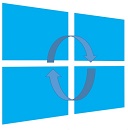This post has been republished via RSS; it originally appeared at: Microsoft Tech Community - Latest Blogs - .
Justifying the move to cloud is a crucial decision for a business and it could be difficult to know where to start. To make an informed decision to move to cloud, customers are looking into all available migration strategies and associated costs. They are also looking for ways to build and validate such proposals to be able to decide quickly. With the current economic situation, it is becoming much more important to address cashflow challenges, add capacity and prevent security attacks while ensuring business continuity. Microsoft is committed to helping you navigate this journey with confidence and eliminate the guess work involved in the cost planning process with Azure Migrate’s new data driven business case capability. With this feature, you can conduct financial analysis with just a few clicks and create customized proposals, which can then be shared with decision makers for quick decisions.
Azure Migrate
Azure Migrate is Microsoft’s unified platform for migrating to and modernizing in Azure. It provides discovery, assessment, planning, migration, and modernization capabilities for various workloads on your premises. Azure Migrate allows you to run and manage your migration and modernization projects from a unified, secure portal.
About Business Case capability
Today we are announcing the preview of Azure Migrate business case in Azure Migrate today to understand the return on investment for migrating your servers, SQL Server deployments and ASP.NET web apps running in your VMware environment to Azure. The business case can be created with just a few clicks and can help you understand how Azure can bring the most value to your business. It highlights:
- On-premises vs Azure total cost of ownership and year on year cashflow analysis.
- Resource utilization-based insights to identify servers and workloads that are ideal for cloud and right-sized recommendations in Azure.
- Quick wins for migration and modernization including end of support Windows OS and SQL versions.
- Long term cost savings by moving from a capital expenditure model to an Operating expenditure model, by paying for only what you use.
How to get started?
Please refer to the steps below:
- If you have an existing Azure Migrate project:
1. The Business Case feature is already enabled on your existing Azure Migrate projects once the discovery from Azure Migrate appliance has been completed. Simply click on ‘Build business case’ to get started:
2. Build a business case using minimal inputs
3. Review the Business Case reports including the Overview, on-premises vs Azure, Azure IaaS and Azure PaaS reports. You can also create different what-if scenarios by editing the assumptions that went into the calculations.
4. Get buy-ins from stakeholders and start your migration and modernization journey with confidence.
- If you are new to Azure Migrate:
You will first need to set up an Azure Migrate project. Once you have created a project, you will have to deploy and configure the Azure Migrate appliance. This appliance enables you to perform discovery from your datacenter. After the discovery, you can build and review the business case reports.
- Create an Azure Migrate project from the Azure Portal, and download the Azure Migrate appliance for VMware. Customers who already have an active Azure Migrate project can start using the feature directly.
- Deploy a new Azure Migrate appliance for VMware. To enable you to discover your datacenter easily, the appliance lets you enter multiple credentials – Windows authentication (both Domain and non-Domain) and SQL Server authentication. The Azure Migrate appliance will automatically map each server to the appropriate credential when multiple credentials are specified. These credentials are encrypted and stored on the deployed appliance locally and are never sent to Microsoft.
- View the summary of the discovered IT estate from your Azure Migrate project and click on ‘Build business case’. You can view details of the discovered servers such as their configurations, software inventory (installed apps), dependencies, count of SQL instances and ASP.NET web apps etc.
- Build a business case using minimal inputs
- Review the Business Case reports including the Overview, on-premises vs Azure, Azure IaaS and Azure PaaS reports. You can also create different what-if scenarios by editing the assumptions that went into the calculations.
- Get buy ins from stakeholders and start your migration and modernization journey with confidence.
Learn more
- Check out our demo to see the preview in action.
- Check out this documentation for more details.
- Learn more about Azure Migrate.
- Get migration assistance from the Azure migration and modernization program (AMMP). AMMP is now a comprehensive program for all migration and modernization needs of our customers. Join AMMP today.






